Aloe
Aloe vera plant. www.pixabay.com
Aloe vera (Aloe barbadensis) is an attractive, sun-loving succulent, valued for its rosettes of fleshy, narrow, upright leaves that reach heights of 1 to 2 feet at maturity to make a big impact indoors.
This succulent with long, pointed leaves has medicinal properties, as you probably well know.. Smaller varieties, like the popular aloe vera, work great in small, sunny indoor spaces.
Aloe likes room temperatures around 70 degrees and a lot of sunlight. As you might expect for a succulent, this indoor houseplant prefers dry soil, so avoid frequent watering for the best results.
Read also: Aloe vera as a Houseplant
Anthurium
Anthurium. www.pixabay.com
Anthurium is a classy tropical ornamental plants that is highly prized for its stately, bright flowers. Anthurium plants can tolerate all levels of indirect light, but anthuriums growing in low light will have fewer flowers and will grow slower. However, these plants cannot tolerate direct light, as this can burn the leaves. Anthurium grows best in bright, indirect light.
Areca Palm
Areca palm
Palm trees are the enduring symbol of everything tropical, and there is a selection of palms that are easy to grow indoors. This pretty indoor house palm is a great inspiration if you're dreaming of tropical climates — or just trying to conjure the look in your home decor.
It can grow to about 7-feet tall for a dramatic touch in a room, but a smaller pot will keep it contained if you'd like it to stay smaller. The areca palm does well in indirect light. Keep the soil somewhat dry, only watering on alternate weeks or so.
Houseplant palms are perfect for adding a bold, tropical touch to your home. There's a variety of beautiful palm trees that thrive as houseplants in bright rooms. Use palms to break up a section of blank wall, to fill an empty corner, to soften the edges of windows or furniture, or act as a living sculpture at the end of a side table. A row of houseplant palms can make for a lovely living screen or room divider, too!
Bromeliads
Bromeliad
Bromeliad plants provide an exotic touch to the home and bring a sense of the tropics and sun-kissed climates. Bromeliads are probably the easiest of all tropical plants to grow. Growing a bromeliad as a houseplant is easy and brings interesting texture and color to the interior garden.
These tropical epiphytes (air plants) are easily adapted to growing in pots, and they're much more tolerant than many of their lush-leaved colleagues. They come in a wide array of colors and textures.
Cordyline
Cordyline
Cordyline can be a colourful and vibrant addition to any tropical garden. These bold and colorful foliage plants are available in a wide array of leaf colors, and with proper care, can provide a dramatic accent. Fantastic splash of colour when planted in amongst palms and leafy tropicals. Plant it inside, it won’t need as much sun, so place it about three to five feet away from a window. Make sure it is nowhere near a vent or a drafty area to prevent drying out.
Read also: Cordyline for Houseplant
Dumb cane (Dieffenbachia)
Dieffenbachias
Dieffenbachias have some of the most beautiful mix of green / white / yellow foliage you will ever find on an indoor plant. Dieffenbachia (Dumb cane) are almost ubiquitous as houseplants, so it's easy to forget they're also a true tropical foliage plant.
Dumb Canes almost always look best as smallish compact bushy leaved plants, so by repotting you allow it room to grow taller and risk loosing the attractive nature of a smaller plant. Watch out for the sap on these plants—it can be caustic. You should wear gloves when handling them.
Jade plant
Jade plant. www.pixabay.com
For those who love the look of a succulent — not to mention, the ease of care — a jade plant offers thick, lush leaves and visually interesting branches. However, because this succulent plant matures slowly, it makes an excellent house plant in a bonsai form for the home or office. It also looks great in a pretty pot when paired with other succulent varieties.
Jade plants don't require a lot of water, so keep soil somewhat dry. It prefers bright light and ordinary room temperatures. Jade plants come in many varieties and combinations of white, pink, yellow, red, purple and even a dwarf form. Most require the same type of care.
Rubber Tree
Rubber tree. www.pixabay.com
Rubber tree is an easy-to-grow indoor houseplant that will grow into an 8-foot-tall tree for a major pop of greenery in a room. If you prefer a smaller plant, make your rubber tree into a shrub shape by pruning any long stems. Extra bonus: The dark green leaves have an attractive shiny finish.Allow the surface of the rubber tree's soil to dry out in between watering. It thrives in lighting conditions from medium to bright, and a range of room temperatures between about 60 and 80 degrees.
Ficus
Ficus. www.pixabay.com
Ficus -- also called figs -- are among the most popular indoor plants, and for good reason. These are easy to grow houseplants and offer a lot of variety, from low groundcover types to tall trees. Ficus also offer a variety of textures, so there's one for practically everyone's personal style.are fussy, yes, but a well-grown ficus is near the pinnacle of houseplants. Large, glossy, and imposing, ficus plants are well worth the effort.
Orchids
Orchid. www.pixabay.com
Orchids are the most varied of all plant groups, there are about 25,000 – 35,000 species. Orchid can be spread all over the world, from deserts to woodlands to tropical forests. But the orchids most people love are the tropical and subtropical ones, and what says "tropics" more than a flowering orchid.
Read also:
The largest orchid species in the world: Grammatophyllum speciosum
New Orchid Species: Phalaenopsis kapuasensis
Peace lilies
Peace lily. www.pixabay.com
Surely you've seen this indoor houseplant in many homes, since it has such pretty, curving white blooms and dark leaves and it's easy to grow. Peace lilies are tropical, evergreen plants that thrive on the forest floor, where they receive dappled sunlight and consistent moisture. Replicating these conditions in the home is the key to getting your peace lily to be happy and healthy.
Peace lilies are lovely, especially when they're massed and in bloom. They aren't as hard to grow and maintain as they look and the blooms last for months. Even if they are a bit of a challenge to overwinter, it's still well worth the effort.
With enough light, peace lilies may produce white to off-white flowers in the early summer and continue to bloom throughout the year. This houseplant favors low humidity and also low light, making it great for rooms with few windows. It prefers moist soil throughout the pot and tolerates standard temperatures to about 85 degrees.
Philodendrons
For generations, philodendrons have served as a mainstay in interior gardens. Philodendron care is easy because if you watch for the signals, the plant will tell you exactly what it needs. Even inexperienced houseplant owners will have no trouble growing philodendron plants because they adapt readily to the conditions inside the home. This makes learning how to care for a philodendron incredibly simple.For indoor use, there are climbing varieties and the self-heading (non-climbing) types of Philodendrons. Newer hybrids have been bred that mix the vigor and ease of the climbing varieties with the convenience of the self-heading varieties. It's easier than ever to grow them.
Pothos
Pothos
Why you want it: First of all, this indoor plant has an air-purifying quality that can absorb and strip toxins (like formaldehyde) from materials in the home (like carpet). How neat is that? It has trailing stems and works well in a hanging basket or as a climbing plant with some training onto a trellis or whatever object that will support it.
This indoor houseplant can produce stems that trail 8 feet or longer, so just cut them back when they get too long and your plant will continue to look full and healthy. It can thrive in an array of lighting conditions, but low light may diminish the leaves' variegation. Allow soil to dry somewhat between watering. Pothos does well in an array of normal room temperatures.
Read also: Scindapsus pictus - Satin Pothos, Silk Pothos 'Argyraeus'


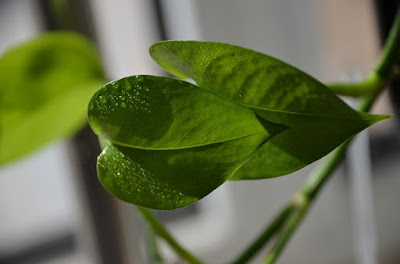


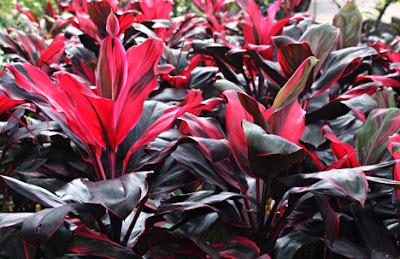
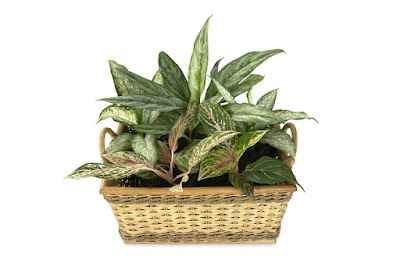
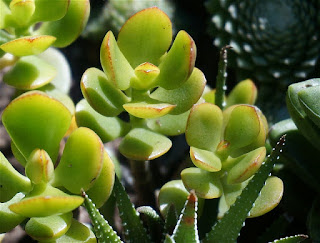
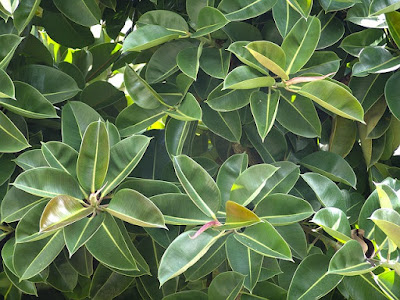

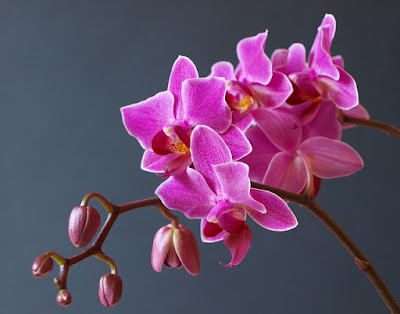


Post a Comment for "14 Beautiful Tropical Houseplants"